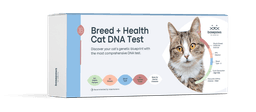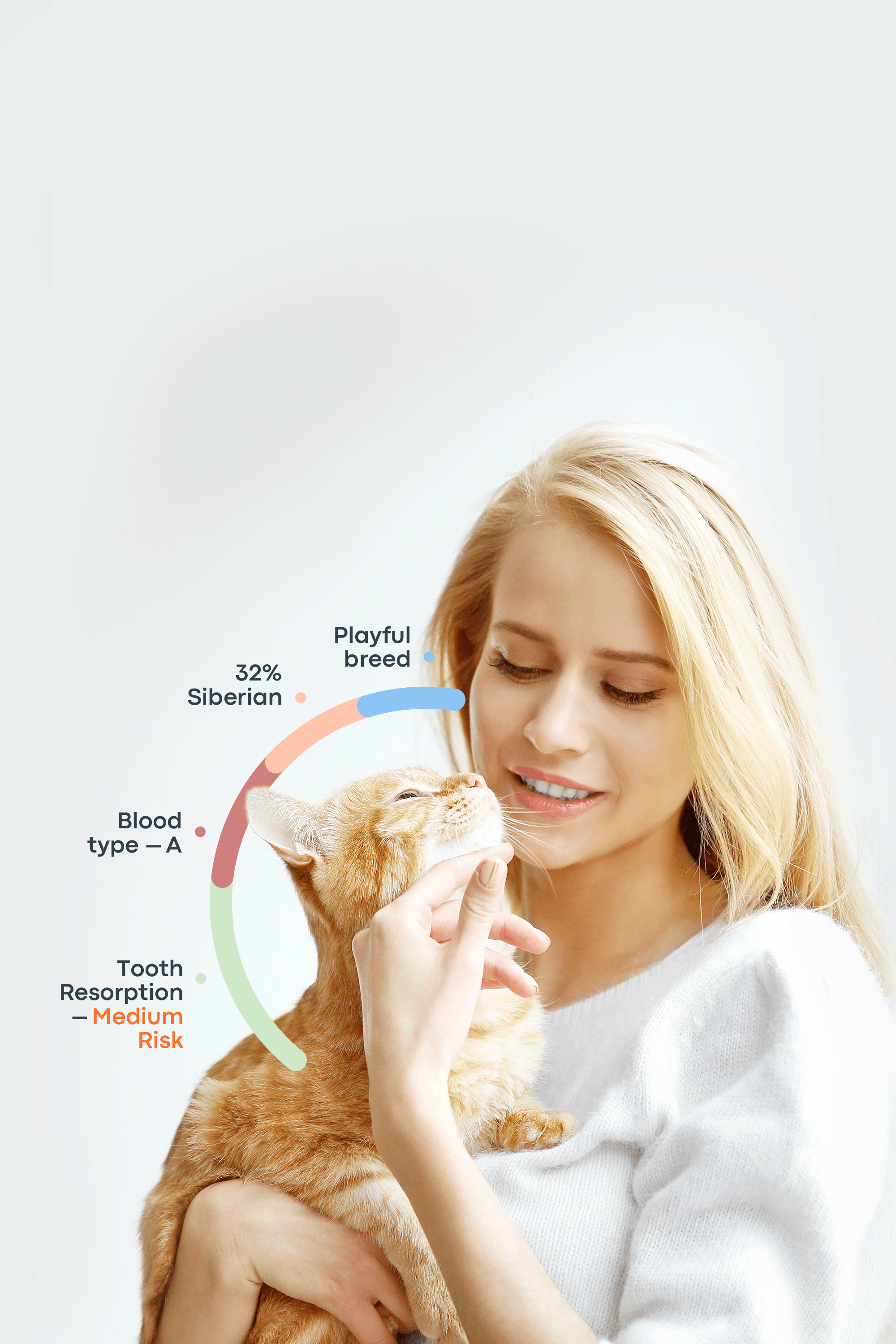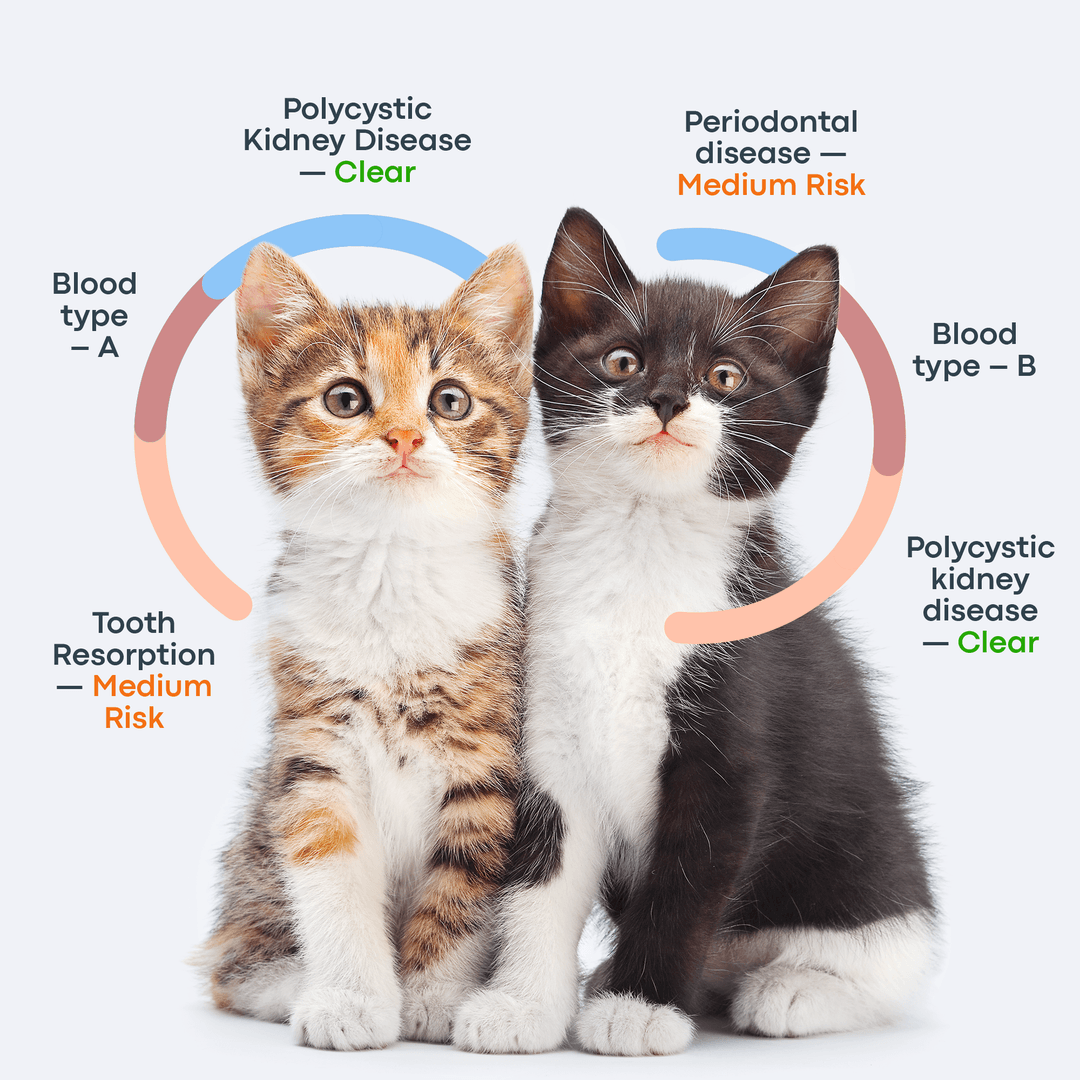As a cat owner, you want to ensure a safe environment for your feline companion. However, many cat owners have limited knowledge about plant toxicity in cats. This results in emergencies that are entirely preventable.
Many common houseplants, such as lilies, are toxic to cats. Pet owners unknowingly bring these plants into their homes, or sometimes, their visitors gift them these plants without realizing the potential risk they pose to our little kitties.
That brings us to orchids and cats. Are orchids toxic to cats? Or are they safe? Whether you are a first-time cat owner or an experienced pet parent, this guide will help you make an informed choice about orchids and their impact on your cat’s health.

Are Orchids Toxic to Cats? The Short Answer
According to the ASPCA, most orchids, including the phalaenopsis orchid (moon orchid or moth orchid), are not toxic to cats, dogs, and horses. This makes orchids a safe alternative to toxic plants such as lilies for cat owners. Orchids are beautiful and exotic and present a stunning option for indoor gardening. They are also low-maintenance and need infrequent watering.
Please note that even though orchids don’t result in toxicity in cats, they are not safe to chew. Eating orchids, especially in large amounts, could result in stomach upset in cats.
Types of Orchids and Their Safety for Cats
Type of Orchid | Safe or Toxic to Cats? | Important Notes |
Moth Orchids | Generally safe and non-toxic | Ingesting it could cause vomiting and stomach upset |
Dendrobium | Generally safe and non-toxic | Ingesting it could cause mild stomach upset |
Cattleya Orchid | Generally safe and non-toxic | Overeating could cause GI upset |
Boat Orchid/Cymbidium | Not toxic to cats | Ingesting large amounts could cause stomach upset |
Orchis | Non-toxic | Ingesting them can cause diarrhea or vomiting. |
Vanda | Generally safe and non-toxic | Ingesting could cause stomach upset |
Dancing Lady/Oncidium flexuosum | Generally safe and non-toxic | Ingesting large amounts could cause stomach upset |
Slipper Orchid | Generally safe and non-toxic | Wild species of Lady’s Slipper Orchid can cause mild gastrointestinal upset if consumed in large quantities |
Monkey Orchid/Dracula orchids | Generally safe and non-toxic | Can cause mild gastrointestinal upset if consumed in large quantities |
Bee Orchid/Ophrys | Generally safe and non-toxic | Can cause mild gastrointestinal upset if consumed in large quantities |
Tiger Orchid/Grammatophyllum speciosum | Generally safe and non-toxic | Ingesting large amounts could cause stomach upset |
Chinese Ground Orchid/Bletilla striata | Non-toxic | Overeating could cause GI upset |
What Happens If a Cat Eats an Orchid?
“Are orchids bad for cats?” is a very common question. If your cat consumes orchid flowers, leaves, or stems in large quantities, they could suffer from mild gastrointestinal upset or stomach upset. This could include symptoms like diarrhea, excessive drooling, lethargy, lack of appetite, stomach cramps, and vomiting.
If they have only eaten a small amount of orchids, cats should be fine within a couple of hours. Allow your pet to rest. Do not force them to eat if they are nauseous. If they do show interest in food, provide some boiled chicken broth mixed with a bit of rice.
If the symptoms persist or worsen, please take your cat to the vet. You might have to provide the vet with details like the species of orchid the cat ate and the parts they ate (leaves, flowers, roots), the quantity consumed, and how long ago they consumed it. If needed, carry a sample of the orchid in a bag to help the experts identify the orchid species.
Prevention Is the Best Medicine
If you notice your cat eating an orchid plant (or any plant you are unsure of), please remove the chewed-up parts immediately. It is best to keep the plant away and out of reach of your curious kitty.
Toxic Lookalikes: Plants That Are Dangerous for Cats
Now that you know the answer to the question “Are orchids toxic to cats?” you may want to consider orchid lookalikes that can be harmful or dangerous to cats.
Lilies
Alstroemeria (Peruvian Lily) resembles and is often mistaken for certain orchid varieties. Unfortunately, all true lily species are toxic to cats, including Tiger lily, Japanese showy lily, Easter lily, Peruvian lily, etc. Cats are the only species known to be sensitive to lily ingestion. Certain chemicals in lilies cause renal issues in cats, and the ingestion of even a small amount of lily parts (flowers, stems, leaves, and roots) can damage a cat’s kidneys, resulting in a veterinary emergency.
Even non-true lily species, like Calla lily and Peace lily, are harmful to cats. Even if these species do not harm your cat’s kidneys, they could result in stomach upset and severe vomiting or diarrhea.
Tulips
As per the ASPCA, all tulip species are toxic to cats, dogs, and horses. Tulipalin A and B compounds in tulips can cause symptoms like vomiting, depression, diarrhea, and hypersalivation in animals. The concentration of Tulipalin A and B is highest in the bulbs, so it may be best to keep your cat away from tulips.
Oleander
Oleanders (Nerium oleander) produce pretty pink flowers, but all parts of this plant – seeds, leaves, stems, and flowers – are extremely toxic and poisonous. All parts of the plant could harm humans and pets. Ingestion of oleander is fatal, so it is best not to keep these plants at home.
Amaryllis
The flowers of amaryllis and orchids do not have too many similarities in appearance, but cat owners must avoid keeping amaryllis flowers near their pets. Amaryllis contains lycorine alkaloid, which is extremely toxic to cats. This alkaloid is present not only in the flower bulbs but also in the plant’s leaves and stalks. Symptoms of amaryllis toxicity in cats include changes in blood pressure, vomiting, lethargy, excess drooling, diarrhea, and stomach cramps.
Sago Palm
According to PetMD, sago palm is extremely toxic to cats. Unfortunately, these plants have become popular as they are easy to cultivate at home. They also produce attractive orange-red seeds, which fall out when the fronds are blooming. A curious kitty could eat these seeds and could die within hours of ingesting even a small part of the seedling. Therefore, it is best not to keep a sago palm at home if you are a cat guardian.
Aloe
Not many cat owners know that aloe vera is extremely toxic to cats and can result in symptoms like vomiting and diarrhea. Most cats are smart enough not to go near or ingest aloe. However, if a cat or kitten unknowingly eats a large amount of aloe, they could suffer from dehydration resulting from severe vomiting and diarrhea. Therefore, it may be best to err on the side of caution and avoid keeping aloe vera plants indoors or in places where a cat can easily access them.

How to Keep Cats Away From Houseplants
Use Cat-Safe Deterrent Sprays
Spray essential-oil-based deterrent sprays around your houseplants to keep cats and kittens away. Cats hate the scent of these products and usually stay away. Make sure the sprays are non-toxic and safe to use around cats.
DIY cat deterrent vinegar spray
White vinegar is a natural, non-toxic remedy to repel cats. Make a DIY cat-deterrent spray by mixing distilled vinegar, water, and a few drops of dish soap. Lightly spray this near (not on) your plants. The scent of vinegar and soap will keep your cat away, at least for a while.
Keep the Plants out of Your Cat’s Reach
Prevention is always better than a cure. If you are unsure whether a plant or flower is unsafe for cats, keep it away and out of your curious cat’s reach. You can keep the plants outdoors in places where your cat is unlikely to go. Alternatively, you can place the plants on shelves or hang them high up out of your cat’s reach.
Provide Alternative Chewing Options Like Cat Grass or Silver Vine
Experts at the VCA Hospitals recommend cat grass (grass that produces cereals like oats, wheat, alfalfa, etc.) or silver vine to cat owners looking for non-toxic houseplant alternatives. These grasses benefit your cat’s digestive system and also provide them with trace minerals, micronutrients, and vitamins A, D, and B.
Add Citrus Peels or Aluminum Foil to the Pots
Cats dislike the scent of citrus peels (peels of oranges, lemons, and limes). You can place them around the plants you don’t want your cat to go near. Alternatively, keep aluminum foil in the planters and pots. The crinkling sound and rough tactile feel of these materials help keep naughty cats and kittens away.

Conclusion
Orchids and cats can be kept together, as these plants are generally safe and non-toxic for cats. Most orchid varieties won’t harm our feline pals. However, you may still want to monitor your cat around these plants.
If your cat eats a large quantity of orchids, they could suffer from vomiting, diarrhea, or other GI symptoms. If they continue showing these symptoms or if you are unsure whether the plant was an orchid or something else (in case of a gift arrangement mix), do not hesitate to see the vet.
Frequently Asked Questions
What happens if a cat eats an orchid?
In small quantities, orchids won’t harm your cat. However, in larger doses, they could result in vomiting, diarrhea, abdominal cramps, and other GI symptoms in the pet.
Are there any types of orchids that are safe for cats to eat?
Most orchid plants and cats can go hand in hand. However, you must monitor your cats to ensure they don’t eat too many orchids, as in excess, they can cause digestive upsets in cats.
Are cats attracted to orchids?
Cats are generally curious and love to explore different fragrances, flavors, and textures. Orchids can be attractive to cats due to their scents and colors. Some cats even like their taste.


